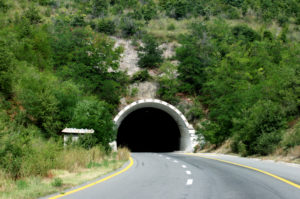 Jeff Roorda suggested this provocation. I wrote it, so don’t blame him! If you would like to submit a provocation for posting – keep it under 400 words and no more than 2 arguments. (i.e. leave something for someone else to say!) To set up a new provocation, email your suggestions to me at penny@talkinginfrastructure.com
Jeff Roorda suggested this provocation. I wrote it, so don’t blame him! If you would like to submit a provocation for posting – keep it under 400 words and no more than 2 arguments. (i.e. leave something for someone else to say!) To set up a new provocation, email your suggestions to me at penny@talkinginfrastructure.com
Or leave a comment on this one!
For years we have acted as if we could tax our way out of an infrastructure deficit if only they (the Government of your choice) would have the wisdom and courage to do it. That is why so much effort has been put into calculating ‘backlogs’. But is it true that we can fix the problem with more money?
The pro side: Yes, if we are prepared to pay for it by forgoing personal consumption (ie pay more tax or more rates) or by reducing other government expenditures. However, without some reduction in the total renewal bill what we have to go without might be rather painful. But would this clear the backlog?
The con side: No, for just as work expands to fill the time available (Parkinson’s Law), the infrastructure deficit or backlog expands to meet the money being spent on it! The clue is in the definition “The term Infrastructure Backlog refers to the total amount or value of renewal works that need to be undertaken to bring a Council’s (or other entity’s) asset stock up to an acceptable standard” source LGMA Knowledge Base. Consider the key word ‘acceptable’. Think back to when you were young, your funds were low and an ‘old bomb’ was quite acceptable (and certainly better than the bus!). But what did you do when you started to earn a decent income? Now it wasn’t ‘acceptable’ any more, so you upgraded. And that is what we all do. ‘Acceptable’ is a relative term. The more we spend on infrastructure, the higher our expectations and the higher the minimum ‘acceptable’ level. Whenever I hear that our roads or other assets are in poor condition, I think ‘relative to what?’ Spending more money to reduce the deficit is thus like a dog chasing its tail. And will be equally unsuccessful.
Your views?

At one level, I agree: our industry is “a dog chasing its tail” trying to fix the backlog. As we spend more money providing better infrastructure, expectations will rise and along with it people’s views on what is “acceptable”… but look at what’s happened in NSW: councils have slashed their backlogs in an attempt to prove they’re ‘fit for the future’: has the dog just caught its tail?
Despite the fact that excessive backlogs were the result of councils following NSW Govt.’s excessive methodology (renewal backlog is any asset below condition 2/5… even though condition 3 assets require maintenance, not renewal!) I wonder how much closer councils are (with alternative methodologies giving a lower backlog figure) to a meaningful conversation with their communities about balancing infrastructure needs with taxation… or to a meaningful conversation with other levels of government about a greater share of tax revenues to overcome our infrastructure challenges?
My view is that framing the conversation in terms of the backlog (however we calculate it) is unhelpful… yet this thinking is embedded in the AM process in IIMM (Fig 1.3.4): we define the input (“acceptable” level of service), optimise lifecycle management activities (including identifying assets to renew) to deliver this and the output of the process is the expenditure required to undertake these activities. Backlog is the cost of renewals beyond available revenues.
If, instead, we frame the conversation as both ISO 55000 and the new NSW LG Act suggest we should, we can start to get some traction. The focus is the ‘value’ we can realise from our asset-related activities with the money we’ve got available (not what we’d like to have if only taxes were higher!). With the community, this immediately introduces the notion of the trade-off between infrastructure and taxes (and competing priorities for other services) AND acknowledges that councils must demonstrate efficiency and effectiveness (value for money), too.
The focus of the conversation with other levels of government shifts, too, from the backlog (the money we need you to help us get hold of) to the REAL concerns with the value being realized from asset-related activities that council is able to undertake with the money it has available (be they related to quality, functionality, capacity, sustainability, risk, resilience)… the real infrastructure challenges.
My perspective is that “infrastructure deficit” is misleading at best as a holistic measure. The frames of reference, definitions of acceptable, and even need for the services provided by infrastructure are volatile and not generally portable between areas of governance or government. The conversation on infrastructure deficit or backlog has to be held in concert with service levels and expectations. To do otherwise is an expensive activity in generating random numbers.
http://consulto.com.au